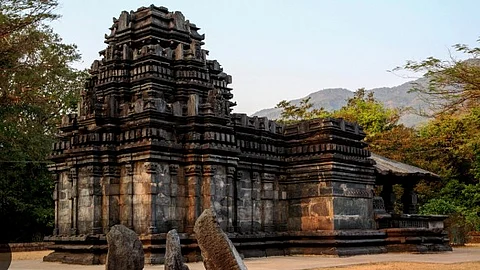

In Indian spiritual and artistic traditions, mudras or hastas are symbolic hand gestures used in iconography, ritual, dance, and meditation. Each gesture conveys a specific meaning or represents a particular state of mind, deity, or philosophical concept. Below is a comprehensive list of significant mudras and their interpretations:
Gestures of Assurance, Reverence, and Meditation
Abhaya Mudra: The "fear not" gesture, signifying protection. The hand is raised with the palm facing outward and fingers extended upward.
Añjali Mudra: A gesture of salutation or greeting, with palms joined together and a hollow space between them, placed at the chest.
Namaskaru Mudra: Similar to Añjali, used in prayer or adoration with palms pressed together at chest level.
Dhyana / Yoga Mudra: Gesture of meditation. Both hands rest in the lap, the right palm over the left, fingers extended, and palms facing upward.
Uttarabodhi Mudra: Symbol of ultimate enlightenment or perfection. All fingers are interlocked with index fingers and thumbs touching and pointed upwards.
Gestures of Teaching, Argument, and Exposition
Chin Mudra: Gesture of knowledge, with thumb and forefinger forming a circle, palm facing outward. Also called Vyākhyāna or Sandarśana Mudra.
Vitarka Mudra: Mudra of discussion or debate. Thumb and index finger form a circle, remaining fingers extended upward.
Iñāna Mudra: Used near the chest, thumb touches the middle or index finger, with palm turned inward.
Gestures of Offering, Boon, and Compassion
Varada or Vara Mudra: Gesture of blessing or giving. Hand is extended downward, below the waist, palm facing out.
Tarpana Mudra: A symbol of offering or homage. Arm raised to shoulder level, fingers bent and pointing toward the shoulder, palm turned inward.
Ksepaņa Mudra: A ritual gesture associated with the sprinkling of nectar, palms joined with downward-pointing index fingers.
Gestures Linked to the Buddha and Deities
Bhūsparsa Mudra: “Earth-touching” gesture. Right hand rests over the knee, fingers touching the ground, signifying Gautama’s enlightenment.
Dharmachakra Mudra: Sign of turning the Wheel of Law. Both hands held at the chest, left hand covering the right.
Bhuddhaśramaya Mudra: A salutation with the hand held near the head, palm upward, fingers extended—common in depictions of Vasudhārā and Uṣṇīṣavijayā.
Vajrahuṁkāra Mudra: Represents the eternal Buddha. Wrists are crossed at the chest holding a vajra and ghanta (thunderbolt and bell).
Gestures Conveying Emotions or Symbolism
Bhūtadamara Mudra: Gesture of awe and command, with wrists crossed in front of the chest—associated with Vajrapāṇi.
Vismaya Mudra: Indicates astonishment or inquiry. Palm faces inward with fingers spread in a circular fashion.
Tarjant Mudra: Gesture of warning or emphasis, with the forefinger pointing upward.
Sūcī-hasta Mudra: Used to point downward at an object.
Gestures Used in Iconography or Rituals
Danda-hasta / Gaja-hasta: The arm is stretched across the chest like a staff or elephant’s trunk.
Katyavalambita / Kaţi-hasta: Denotes ease or relaxation, with the hand resting on the waist.
Kataka-hasta / Simhakarnā Mudra: Fingers loosely form a ring with the thumb, used to hold a daily flower offering.
Harina Mudra: Thumb joins the middle and ring fingers; index and little fingers are extended.
Kartari-hasta: Thumb and ring finger form a ring; index and middle fingers point up like deer horns, often to hold symbols.
These mudras not only enrich spiritual practices but also serve as powerful storytelling tools in traditional Indian dance and sculpture. Each pose carries layered meanings, offering insight into the philosophies and beliefs that have shaped Indian art and religion for centuries.